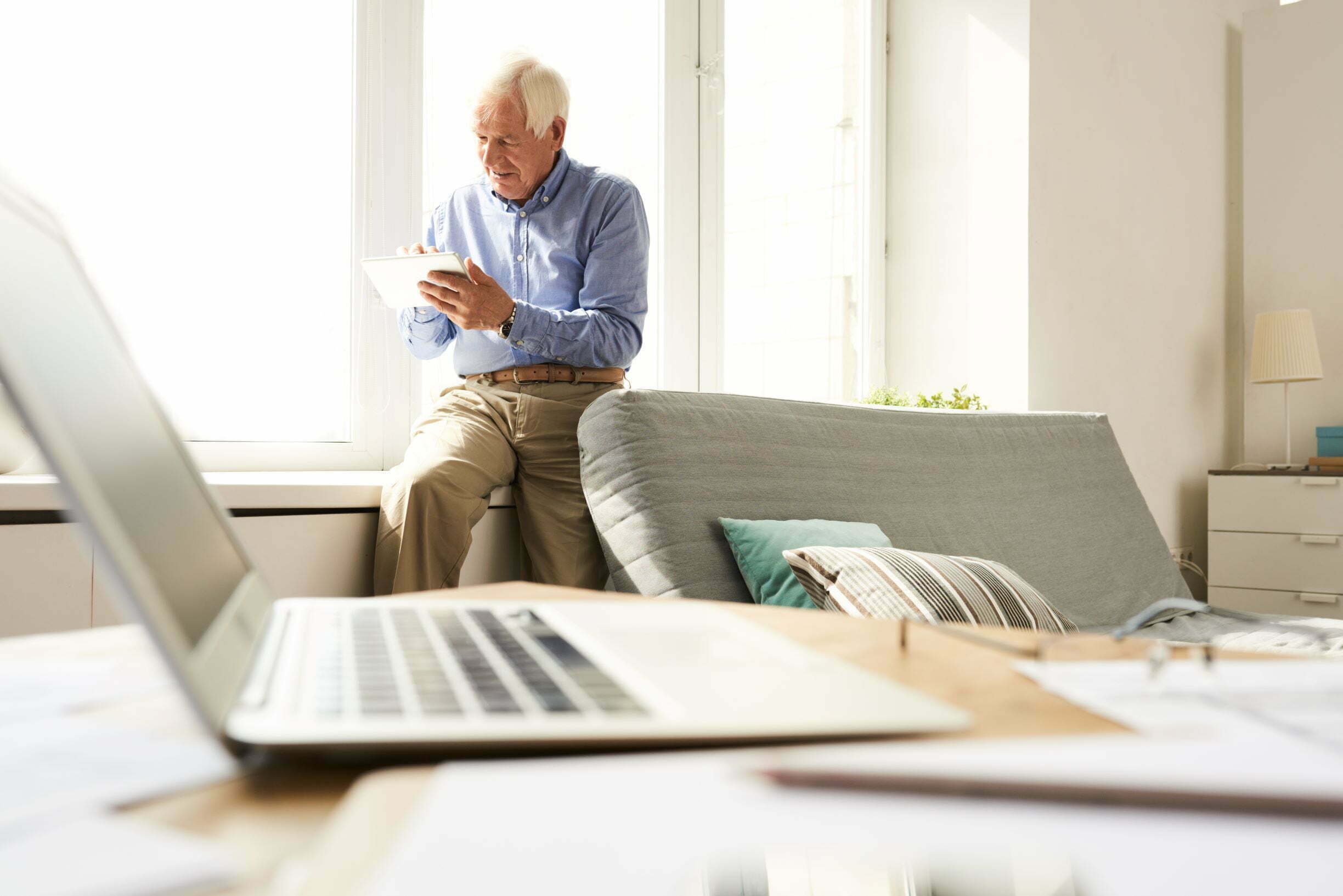According to the National Council on Aging (NCA), 75 percent of seniors suffer from at least one chronic disease. Based on death certificates for U.S. residents from 1999 to 2019, these chronic diseases include heart diseases, malignant neoplasms, chronic lower respiratory diseases, cerebrovascular diseases, and Alzheimer’s disease. They are the top five leading causes of death for seniors aging 65 and above.
Nonetheless, with the improvement of senior healthcare through the advancement of technology, the Population Reference Bureau (PRB) projected that in 2060 there will be more seniors. Almost 100 million Americans will be able to reach the age of 65 or older and this would mean longer life expectancy for Americans in the succeeding years.
Aging in Place for Seniors
The U.S. Centers for Disease Control and Prevention (CDCP) defines aging in place as the ability to live in one’s own home and community safely, independently, and comfortably, regardless of age, income, or ability level. In the 2010 U.S. census, only 3.1 percent of seniors were in nursing homes while the rest of them are aging in place. Seniors are now migrating to their chosen in-home healthcare support rather than in nursing homes.
Herewith, RPM seems to play a great role in making seniors age in place possible. Through RPM, seniors health conditions and wellbeing, especially those with chronic illnesses, will be monitored by their healthcare providers continuously without being restrained in nursing homes or medical facilities.
This article will discuss Remote Patient Monitoring in relation to the healthcare of seniors with chronic diseases.
Remote Patient Monitoring for Seniors with Chronic Disease
RPM solutions, like DrKumo, aim to monitor patients remotely to combat the aggressive development of chronic diseases and to allow patients to recover within the walls of their homes after being discharged from medical facilities. How does this work for seniors?
Many seniors fail to maintain their healthcare and treatment plans after being discharged from the hospital. This often leads to hospital readmissions, frequent clinic or hospital visits, or even sudden deaths. With RPM, these risks are suppressed because seniors, despite physical distance, are given the opportunity to stay connected with their healthcare providers.
Benefits of RPM to Senior Healthcare
- Better Patient Engagement. Studies have shown that seniors who have better engagement with their health management have greater chances of recovering and maintaining better health. With proper education, seniors will be able to monitor their vital signs. They will learn to slow down when their heart rates are fast and to stop eating sweets when their blood sugar spikes. Seniors will be empowered to observe healthier habits and captain their own healthcare journey. This will eventually decrease hospitalizations and sudden deaths. It will also improve seniors’ overall quality of living.
- 24/7 Senior Healthcare Data Access. Healthcare providers will have 24/7 access to the healthcare data of their senior patients. Some RPMs, like DrKumo, even provide live-streaming of patient’s data while simultaneously being collected from the patient’s sensor-enabled medical devices. These are also stored in a cloud database enabling healthcare providers to easily review their patient’s data and provide instructions at a certain time and for a specific purpose.
- Medical Alerts for Non-Compliant Patients. Healthcare providers are aware of non-compliant patients. This is the very objective of RPM- to monitor patients remotely, especially those who easily fail to follow their care plan, like the seniors. For each failure to follow their care plan, the healthcare provider will be alerted. This will give them the opportunity to take appropriate actions to address the non-compliant acts of the senior patient. In this way, the healthcare providers will have an insight on when and even why the patients are not able to keep up with their treatment plan and medications.
- Medical Alerts for Emergencies. In case of emergencies such as, but not limited to, high blood pressure, low blood oxygen level, and irregular heart rhythm, RPM devices will alert the patient’s healthcare provider and their emergency contacts.
- Better Healthcare Provider-Patient Relationships. The use of RPM adds a greater value to healthcare delivery to seniors. With continuous monitoring, healthcare providers will better understand and address the concerns of seniors regarding their health and wellbeing- reducing the trial and error process.
RELATED ARTICLE: Smartwatch as a Wearable Healthcare Monitoring Device
Cost and Technical-Know-How of RPM for Seniors
While seniors have different needs for their different conditions, they may share the same challenges when dealing with RPM. At first glance, these challenges seem to be the cost and the technical-know-how of RPM.
However, it has been proven that RPM reduces healthcare costs. When patients are continuously monitored even outside medical facilities, hospital re-admissions or visits, and the possibility for cross-infection is reduced. Hence, RPM helps healthcare providers deliver quality healthcare while reducing costs.
Also, with proper education, assistance, and willingness to learn, using RPM is not complicated at all. In fact, in a survey conducted by Pew Research Center sometime in 2016, there are already at least 70 percent of seniors who are connected to the internet. These statistics prove that older Americans are willing to explore new technologies more so when concerning their health. As such, learning how to use RPM is no longer a challenge among seniors.








